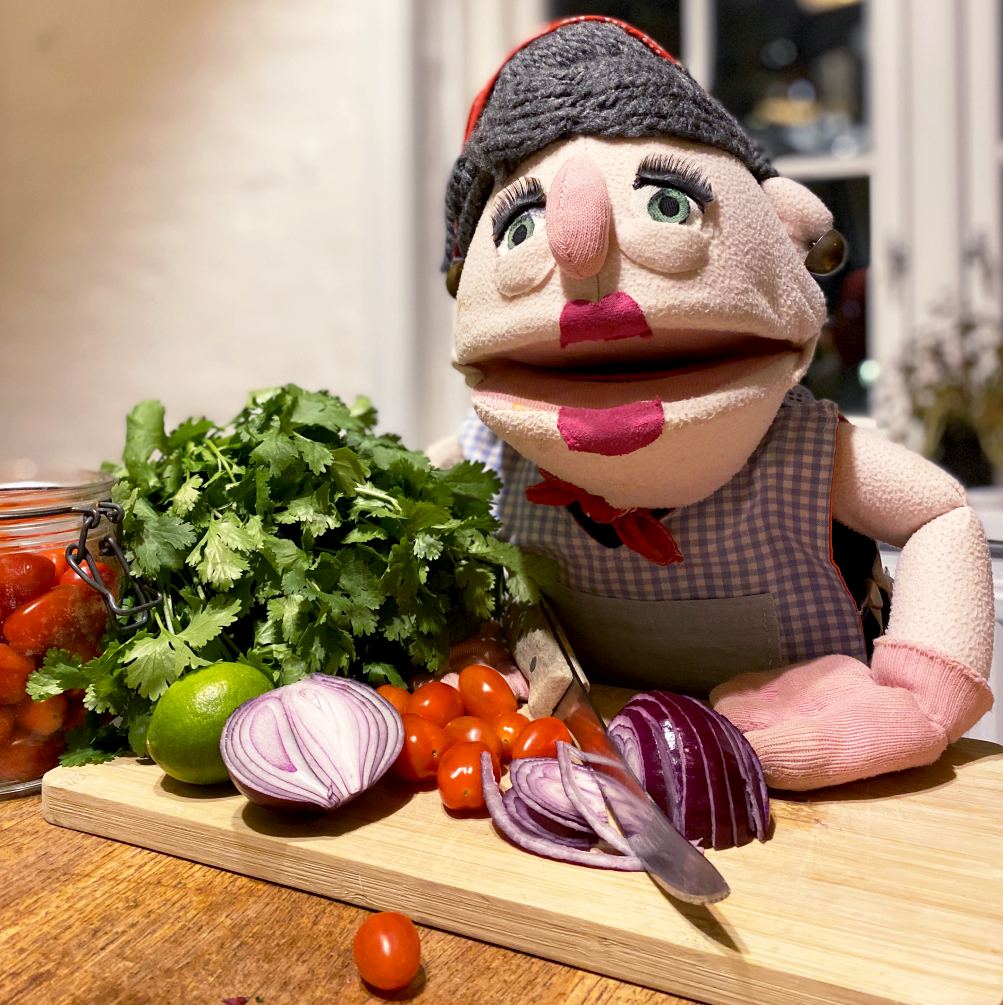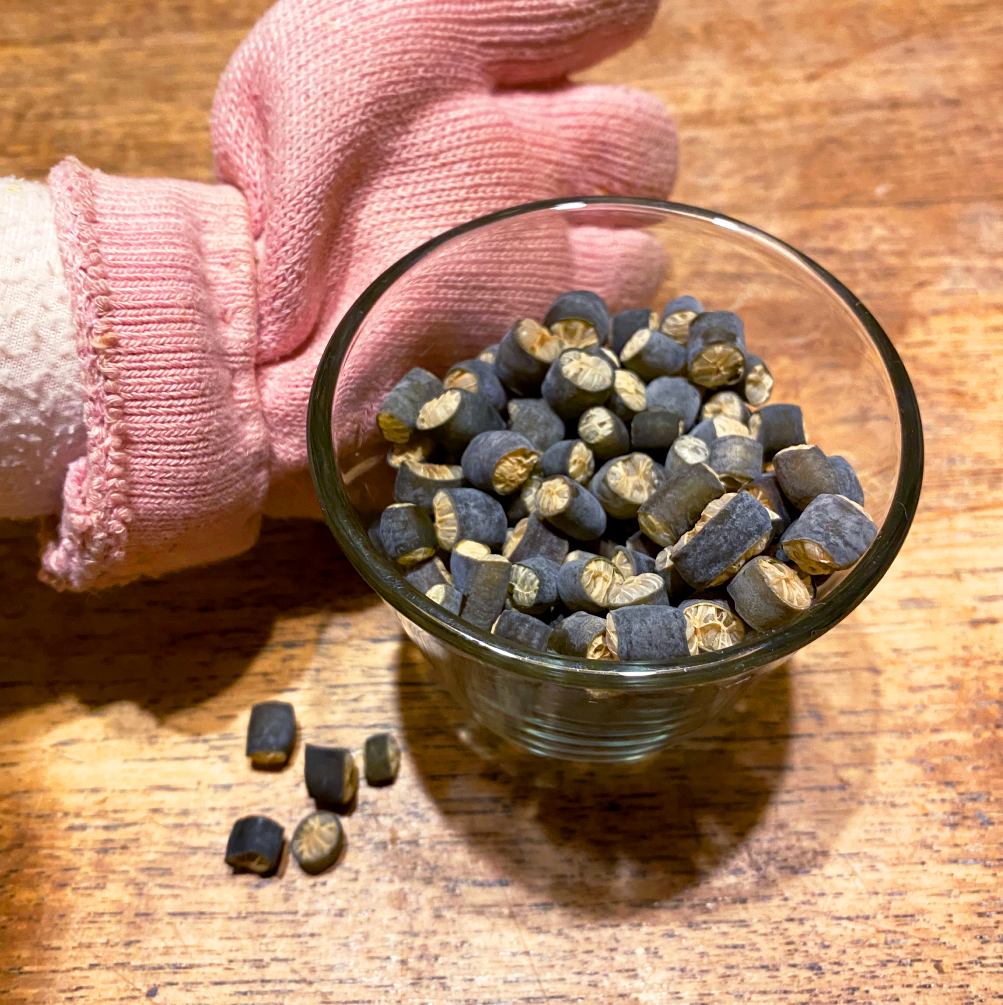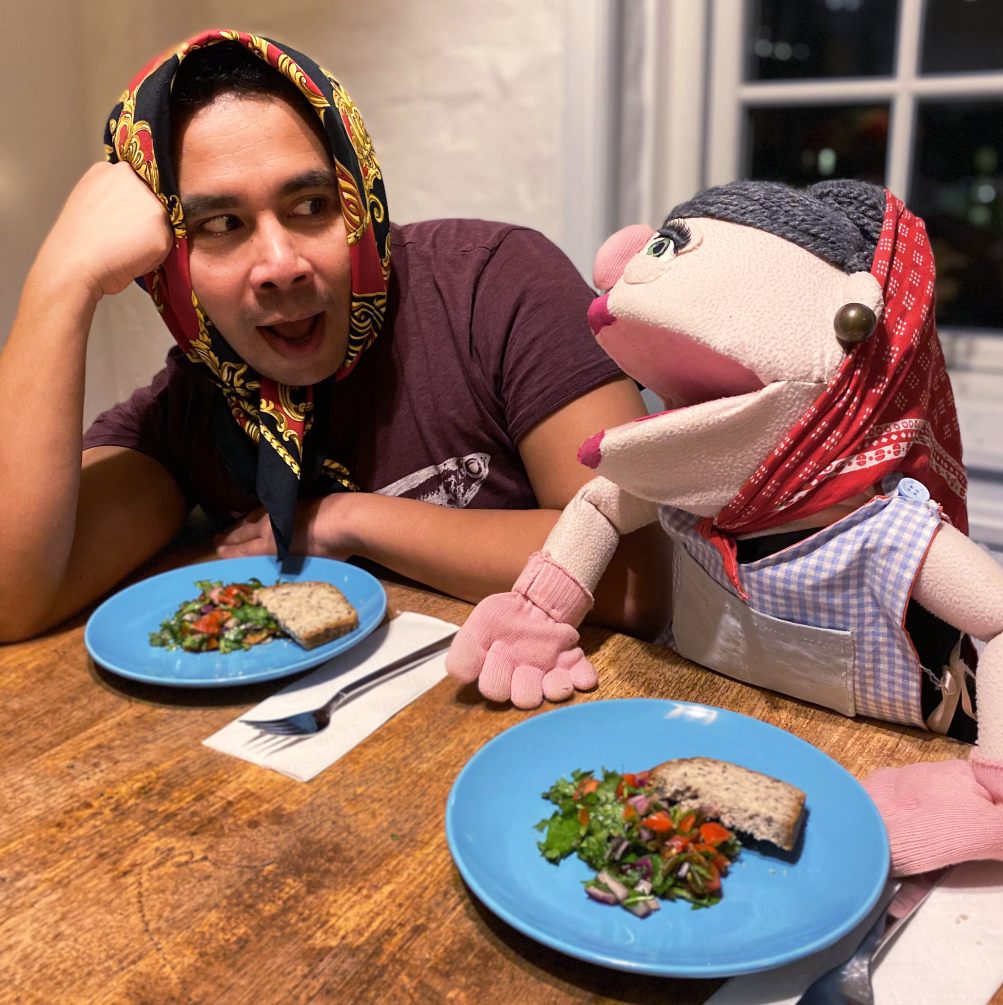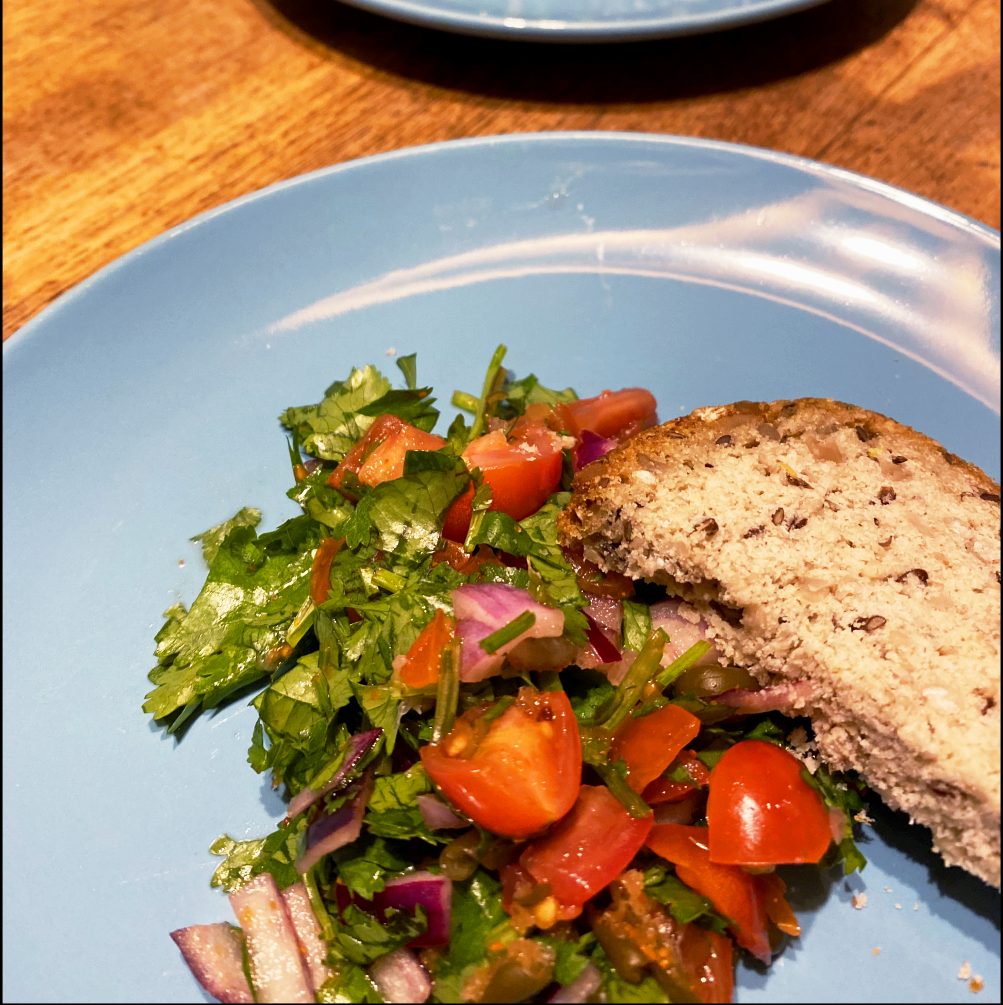Chilean-style cilantro tomato seaweed salad (Pebre de Cochayuyo-inspired)

🌊🤔 Did you know that seaweeds have low calories, but a high content of minerals, proteins, vitamins, omega-3, and omega-6? Adding seaweed to your meals provides a wide range of health benefits and adds flavors and textures. Luckily, there are different types of edible seaweeds worldwide that you can choose from locally. What are you waiting for eat delicious seaweeds!
🌱😋 🇨🇱 Cristóbal joined A Grandchild in My Kitchen, Grandma Sita’s plant-based cooking challenge, so let’s cook delicious Chilean-style cilantro tomato seaweed salad. Pebre de Cochayuyo, a popular Chilean coastal dish, inspires this plant-based recipe.
🥗 Pebre is a traditional Chilean sauce or condiment that complements any meal. A cross between pico de gallo and chimichurri, it has the freshness of pico de gallo and the spicy, sourness of chimichurri.
🐚 Cochayuyo is an edible seaweed that grows in the waters of Chile, and is a classic food of the national gastronomy, especially in coastal areas. It is a high source of vitamins minerals and antioxidants that provide great health benefits and have a mild but intense flavor.


INGREDIENTS
*For the Pebre
A bunch of fresh coriander (leaves and stem)
1 large red onion
4 small tomatoes
2 Aji chili peppers
1 tablespoon lemon juice or red wine vinegar
4 tablespoons of olive oil
Salt
Note: for this recipe, we use Merkén powder instead of ají chili peppers. Merkén is a smoked ají chili pepper used as a condiment that is often combined with other ingredients when in ground form.
*For the Cochayuyo
½ cup of seaweed Cochayuyo dried raw
2 cups of boiling water
METHOD
*For the Pebre
1. Chop the onion finely and place in boiling water for 10 minutes, then wash with cold water and drain.
2. Separate the stems of the coriander leaves, and discard the thicker stems. Chop all the rest very fine.
3. Cut tomatoes into four and discard the seeds. Chop the rest into small cubes.
4. Cut “aji verde” chili peppers into cubes and without seeds.
*For the Cochayuyo
1. Hydrate the seaweed Cochayuyo dried small pieces in 2 cups of boiling water for half an hour, then strain and squeeze.
2. Once hydrated, chop into small cubes.
*For the salad
1. Gather all veggies and seaweeds in a bowl.
2. Stir well, add lemon juice, salt, pepper, and olive oil. Adjust the seasoning to taste.
3. Serve with bread, tortillas (flatbread), tacos, or anything else you like, and bon appetite!


👵💚 Grandma Sita’s tips:
*Pebre is the salsa commonly paired with bread uniquely Chilean. Add variation by putting any local edible seaweed in this sauce.
*Keeping homemade hot sauces like Pebre de Cochayuyo in the fridge will prevent temperature changes and last longer. However, the quality of the sauce may decline over time. You may notice that the color of the sauce changes or that the flavor is not as strong as it once was.
📗 Archaeologists found dried remains of Cochayuyo in 14,000-year-old hearths at Monte Verde, suggesting that early communities used the protein-heavy plant as a dietary staple.
🌿 There are therefore endless opportunities to utilize seaweed for food and all kinds of products within the industry medicine, cosmetics, fertilizer, animal feed, building materials, textiles, etc.
🌎 Seaweed in the sea is what fruits and vegetables, shrubs, and trees are on land. Seaweed counteracts oxygen depletion and provides breeding grounds for seafood. A wider production and use of seaweed will benefit both the climate, the biodiversity of the sea, and human health.
